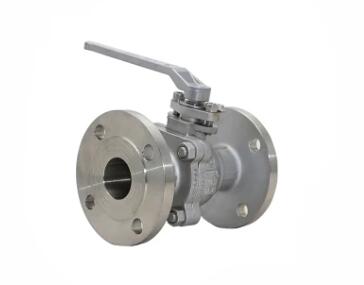Sealing the Deal: Exploring the Role of Ball Valve Seats in Fluid Control
2023-12-02
Introduction:
Within the intricate machinery of fluid control systems, ball valves play a pivotal role in regulating the flow of liquids or gases. A critical component influencing the efficiency and reliability of these valves is the seat—the interface where the ball meets the valve body. The type of seat used in a ball valve significantly affects its sealing capabilities. In this exploration, we will delve into the various types of seats employed in ball valves and how they impact the crucial function of creating a tight seal.
Soft Seats: Embracing Flexibility for Enhanced Sealing
1. PTFE (Polytetrafluoroethylene):
- Characteristics: PTFE, commonly known as Teflon, is a popular choice for soft seats in ball valves. It is renowned for its low friction, excellent chemical resistance, and wide temperature tolerance.
- Advantages: PTFE seats offer exceptional sealing capabilities, ensuring a tight shut-off even in the presence of corrosive substances. The low coefficient of friction also contributes to smooth operation and reduced wear.
- Applications: PTFE seats are widely used in industries where chemical resistance and tight sealing are crucial, including pharmaceuticals, chemicals, and water treatment.
2. RPTFE (Reinforced PTFE):
- Characteristics: RPTFE is a reinforced version of PTFE, often incorporating fillers such as glass fibers or carbon to enhance its mechanical strength.
- Advantages: Reinforced PTFE seats combine the chemical resistance of PTFE with increased durability. The reinforcement minimizes deformation, ensuring reliable sealing even under higher pressures.
- Applications: RPTFE seats are suitable for a broad range of applications, including petrochemicals, oil and gas, and general-purpose industrial processes.
Metal Seats: Enduring Tough Conditions with Strength
1. Stainless Steel Seats:
- Characteristics: Stainless steel seats provide robust sealing capabilities and are resistant to corrosion. They are often used in trunnion-mounted ball valves for high-pressure and high-temperature applications.
- Advantages: Stainless steel seats offer durability and resistance to wear, making them suitable for demanding industrial settings. They provide reliable sealing under challenging conditions.
- Applications: Stainless steel seats are commonly found in industries such as oil and gas, petrochemicals, and power generation.
2. Hard-faced Seats:
- Characteristics: Hard-faced seats are constructed from materials with enhanced hardness, such as Stellite or tungsten carbide.
- Advantages: The hardness of these seats provides resistance to wear and abrasion, making them suitable for applications involving abrasive fluids or particles. They offer extended service life in challenging environments.
- Applications: Hard-faced seats are utilized in industries handling abrasive materials, such as mining, slurry transportation, and certain chemical processes.
Elastomer Seats: Balancing Flexibility and Resilience
1. Nitrile (Buna-N) Seats:
- Characteristics: Nitrile seats, made from synthetic rubber, offer flexibility and resilience. They provide excellent resistance to oil and fuel.
- Advantages: Nitrile seats are cost-effective, offer good sealing performance, and are suitable for applications where exposure to hydrocarbons is common.
- Applications: Nitrile seats find use in industries such as oil and gas, automotive, and general-purpose fluid handling.
2. Viton Seats:
- Characteristics: Viton, a fluoroelastomer, is known for its excellent chemical resistance, high-temperature tolerance, and resilience.
- Advantages: Viton seats provide superior sealing performance in harsh chemical environments and at elevated temperatures. They offer extended service life and durability.
- Applications: Viton seats are commonly used in chemical processing, aerospace, and applications requiring resistance to aggressive fluids.
Conclusion: Tailoring Sealing Solutions for Every Application
The choice of ball valve seat material is a crucial aspect of designing fluid control systems, as it directly influences the valve's sealing performance and overall reliability. Whether it's the flexibility of soft seats, the durability of metal seats, or the resilience of elastomer seats, each material brings specific advantages to the table. Engineers carefully consider factors such as the nature of the fluid, temperature conditions, pressure requirements, and chemical compatibility to select the most suitable seat material for the specific demands of the application. In the intricate dance of fluid control, the choice of ball valve seats plays a starring role in sealing the deal.



